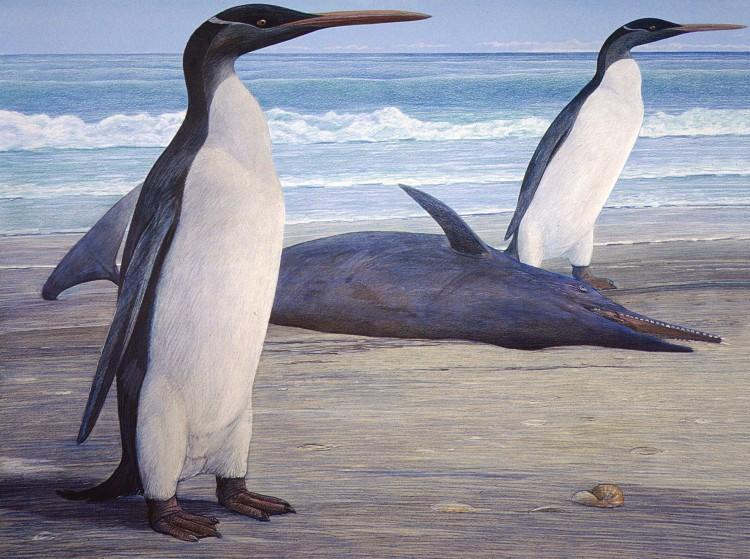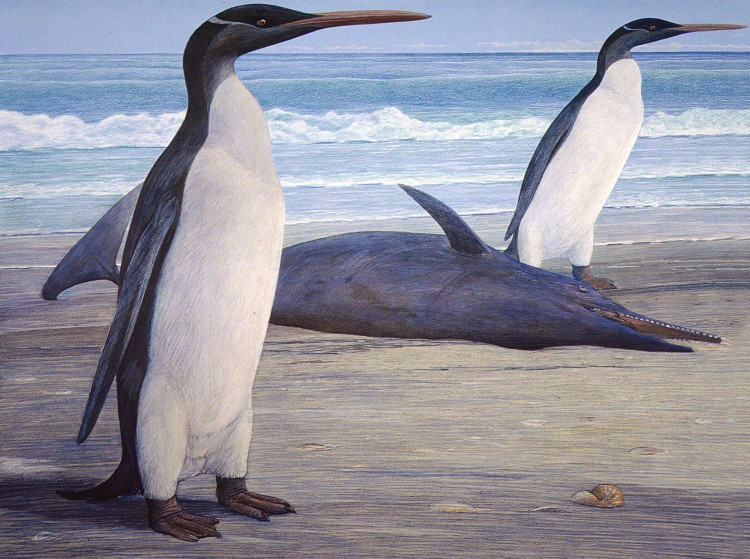The unique physique of a giant penguin species that existed about 25 million years ago in modern-day New Zealand has finally been revealed.
Nicknamed Kairuku, which means something like “diver who returns with food” in Maori, the penguin had an elongated beak, and was the largest of five known penguin species that lived in the region at that time.
“Kairuku was an elegant bird by penguin standards, with a slender body and long flippers, but short, thick legs and feet,” said paleontologist Dan Ksepka at North Carolina State University in a press release.
The fossilized bones were originally found in 1977, but it took paleontologists a long time to reconstruct what the penguin looked like due to the bird’s unusual body shape, and also the number of penguin species in the area. The scientists used two fossil skeletons of Kairuku and the skeleton of a modern-day king penguin to deduce its physique.
“If we had done a reconstruction by extrapolating from the length of its flippers, it would have stood over 6 feet tall,” Ksepka explained. “In reality, Kairuku was around 4-feet-2 inches tall or so.”
New Zealand back in the Oligocene period was a much more watery environment that was highly suited to the penguin lifestyle.
“The location was great for penguins in terms of both food and safety,” Ksepka said. “Most of New Zealand was underwater at that time, leaving isolated, rocky land masses that kept the penguins safe from potential predators and provided them with a plentiful food supply.”
By elucidating Kairuku’s body shape, paleontologists may learn more about other unusual fossils discovered in New Zealand, which have played an important role in improving our understanding of ancient marine biodiversity.
“This species gives us a more complete picture of these giant penguins generally, and may help us to determine how great their range was during the Oligocene period,” Ksepka concluded.
The findings were published in the Journal of Vertebrate Paleontology on Feb. 27.






